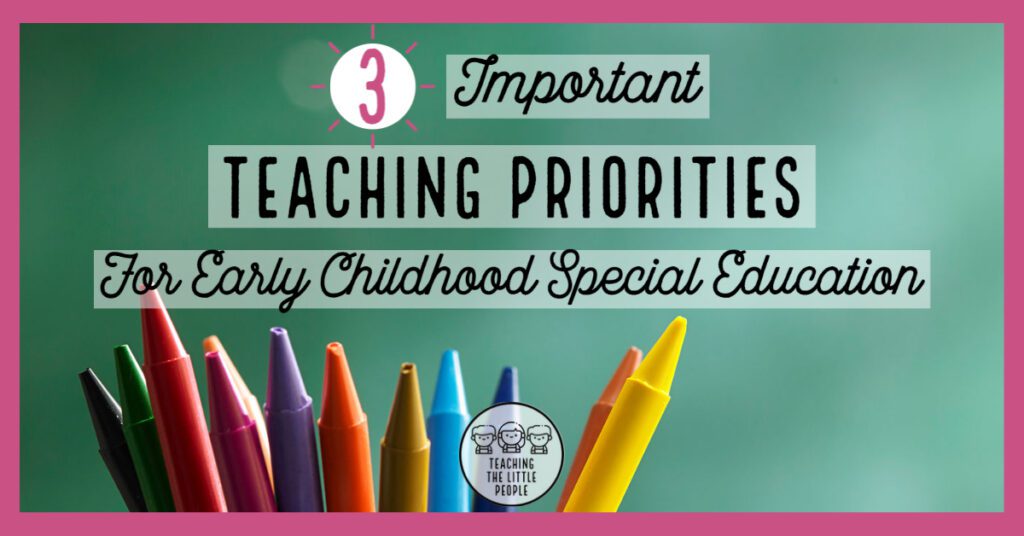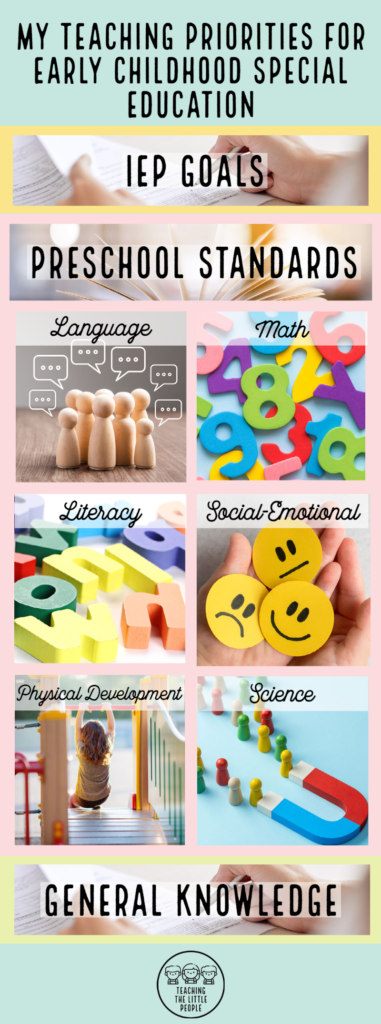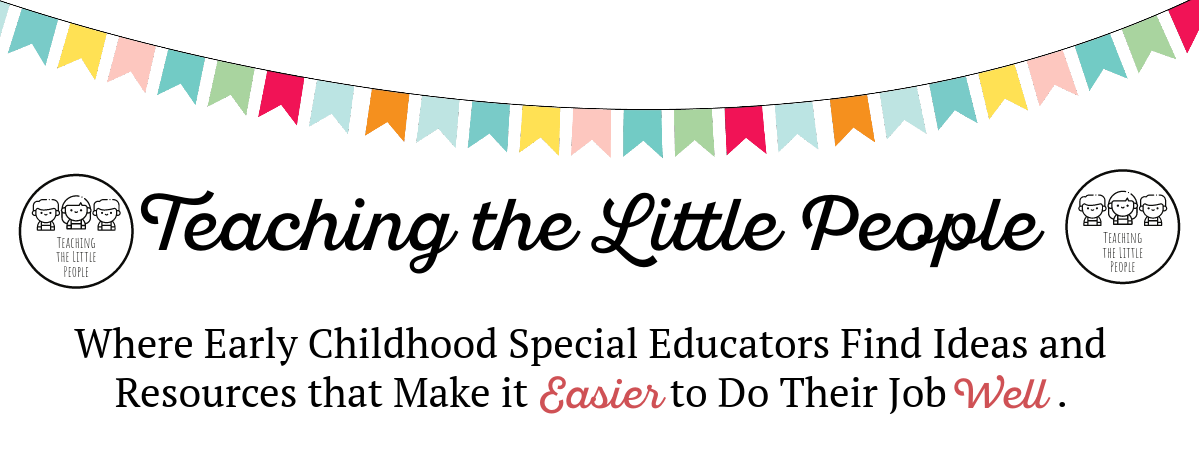.

Priorities of Early Childhood Special Education
Are you an early childhood preschool special education teacher who sometimes struggles with what your priorities should be when teaching your students? You know students’ IEP goals are essential, but what about the other things? What about all the skills that are not included in the IEP goals? How do you balance all the other things they need to know?
I know that I struggle with those questions sometimes. When that happens, it helps to ground myself in the following three specific teaching priorities for early childhood special education.
Teaching Priority for Early Childhood Special Education #1: IEP Goals
Because of the nature of IEP goals and my legal responsibility to work to meet them, they are my first priority in my ECSped classroom. Because of this, I spend a lot of time planning and implementing activities that address each of these goals.
That being said, it is also essential to ensure each student has the best (and most functional goals). The best goals are not general goals pulled from the “preschool development area”. The best goals are ones written specifically for the needs of each student. Kristie Pretti-Frontczak and Diane Bricker (2011) state, “When prioritizing, teams should select goals that 1) are not likely to develop without intervention, 2) significantly enhance a child’s behavioral repertoire, 3) enable the child to be involved in the general curriculum/daily activities, and 4) match a child’s developmental level of performance”. Therefore, it is not only important to just focus on meeting a child’s IEP goals (that perhaps they came to you with) – it is also important to ensure that every child has the best goals for them.
Teaching Priority #2: State Preschool Standards
In general, we also work on skills covered by our state preschool standards. These are areas that might fall out of the range of their IEP goals. These areas are shown by my graphic above and are listed here:
- Language: Teaching students to use words (or pictures or appropriate actions) to get what they want, think, and need. Even though a Speech/Language Therapist spends two days a week with us, I still try to work on language constantly – it’s just that important.
- Math Skills: Numeracy, Spatial Concepts, Comparative Concepts
- Early Literacy: Letter Skills and Phonetic/Phonemic Awareness
- Fine/Gross Motor: Establishing and Refining the small and large body skills to accomplish age-appropriate tasks
- Social/Emotional (which includes Behavioral): Self-Regulation and Interacting with Others
A strong preschool curriculum will provide you with activities and concepts to work on that will help students develop in each of the areas mentioned above.
Teaching Priority #3: General Preschool Knowledge
I think of “general preschool knowledge” as broad, thematic knowledge and experiences that increase the knowledge base of my ECSped students.
In many ways, general preschool knowledge exposure and acquisition is the vehicle for working on students’ IEP goals and preschool standards. By carefully addressing specific skills during teaching themes and learning units, you can address IEP goals and more general preschool skills in a well-balanced, functional way. (As opposed to addressing individual skills in a “focus just one skill at a time”, more splintered fashion.) Plus in my opinion, it’s a lot more fun teaching this way.
It is easy to teach this way? Not always, because you have to put effort into knowing what materials and activities address which skills. You also have to know that for each theme or learning unit that you teach. However, knowing how to do this (differentiating fun, thematic instruction to focus on specific skills within each theme) and doing it well is what I enjoy most about teaching early childhood special education, so stay tuned here on the blog to find out ways to do that.
Citation: Pretti-Frontczak, K., & Bricker, D. (2004). An activity-based approach to early intervention. Brookes Publishing Company. PO Box 10624, Baltimore, MD 21285.

